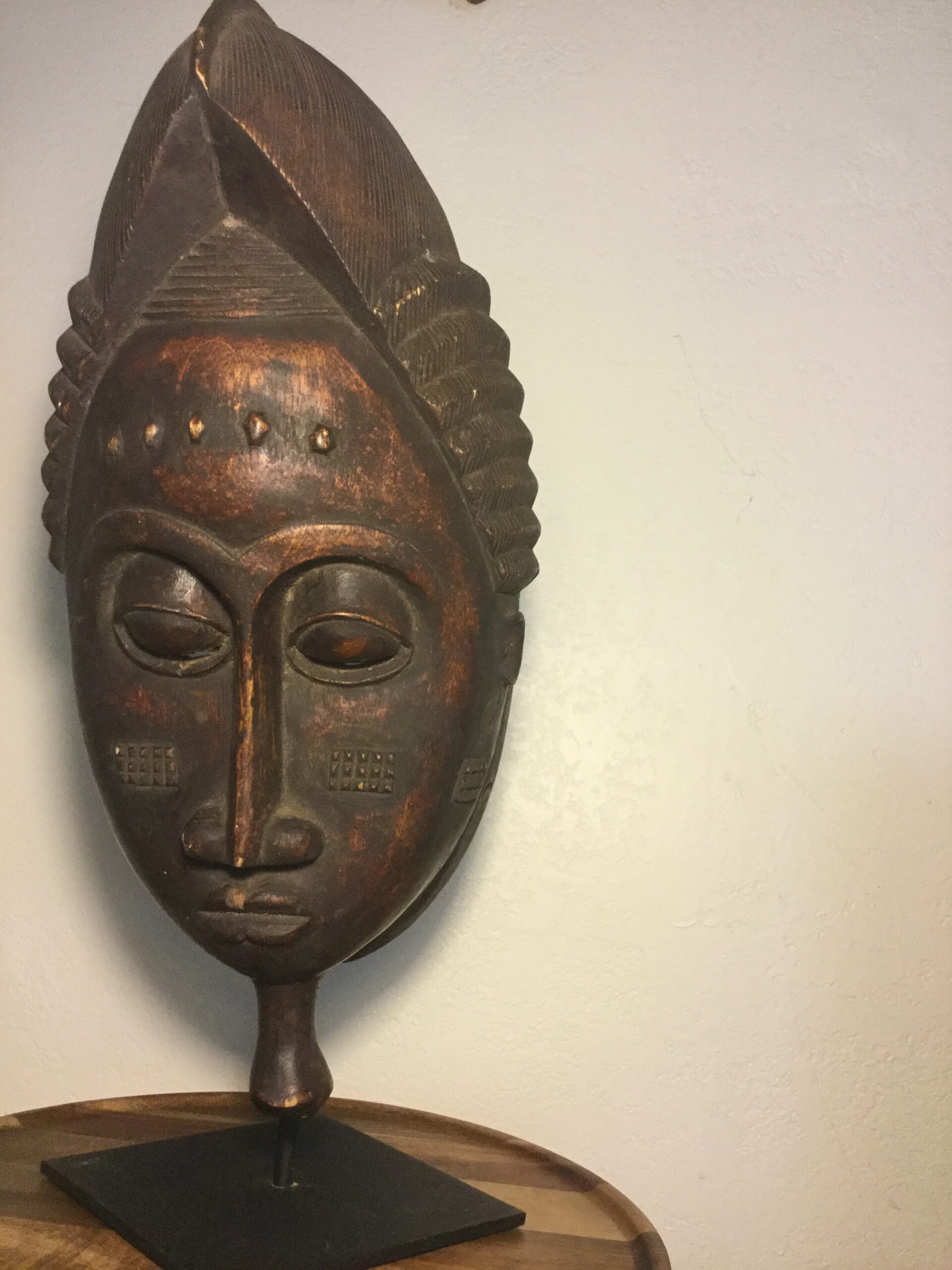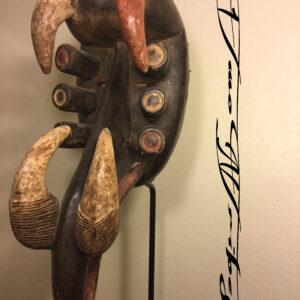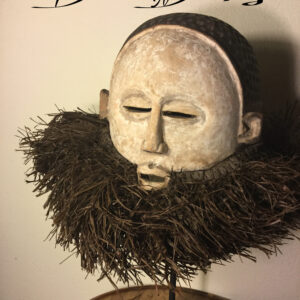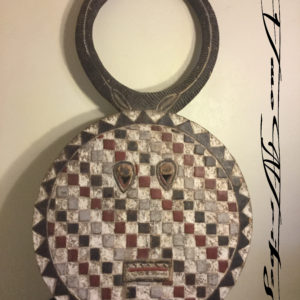Description
Baule portrait mask details the physical facial features namely eyes, eyebrows, nose, mouth and eyes. In addition, the coiffure, beard, and facial scarification compliment the physical beauty. The scars found around the eyes and mouth indicates human scarification during rites of passage into adulthood. The beard Indicates that the person is an elder, someone who has created a family, lived a full life and one who deserves respect that comes with age and wisdom.
The attributes above allow us to distinguish to some degree baule masks from other African masks, which may have adopted similar styles. Baule people create art in various media, including wooden sculpture, gold and brass casting similar to the neighboring Asante. Mask and figure carving have also been greatly influenced by the Senufo and Guro tribes.
Religion includes both ancestor worship and hierarchy of nature gods. Nature spirits and spirit spouses are often represented in sculpture. The creator god is Alouroua, who is never physically represented. The mask was worn when Royals, Dignitaries or Nobles visit.
The Baule has a highly centralized government with a king or chief at the top who inherits his position along matrilineal lines. There are various sub chiefs in charge of his local populations, and all the chiefs rely on political advisors who help in the decision making process. The Goli association is the primary mask association, which provides social order among the Baule.
The Baule belong to the Akan peoples that inhabit Ghana and Côte d’Ivoire. Three hundred years ago the Baule people migrated westward from Ghana when the Asante rose to power.





